3D MECHANICAL INSECT IMAGES
> What is this?
This is the result of an art project that combines my skills in 3D modelling with a long-time interest in entomology (the study of insects). None of the images below are meant to suggest a combination of organic and artificial components: it's all artificial, but with a stronger emphasis on natural form than we see with most modern robots.Onto the creatures... [Clicking on the images will provide a slightly zoomed in (or zoomed out) image]
> Dragonfly
Dragonflies are predators: and this particular one has been given features referring to the form of an attack helicopter.

> Ladybird (3 images)
With this ladybird, the undercarriage would 'collapse' or compress back under the shell upon landing. The white 'eyes' of a ladybird are not actually eyes, but white markings, and here they've been turned into headlights/lamps.
I've noted that the Cheyenne Dropship from the 1986 film 'Aliens' has a similar profile to a flying ladybird when it's coming in to land.

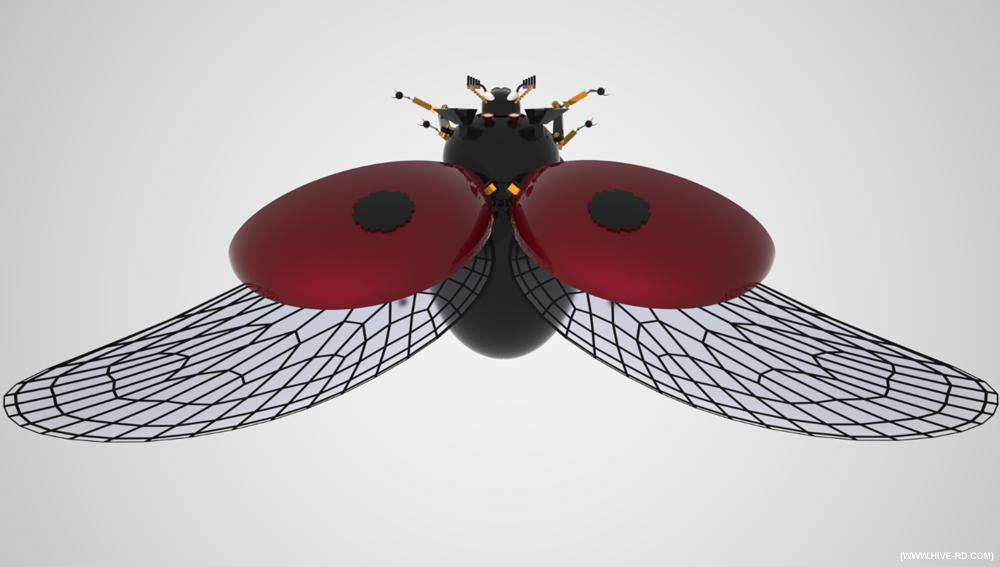
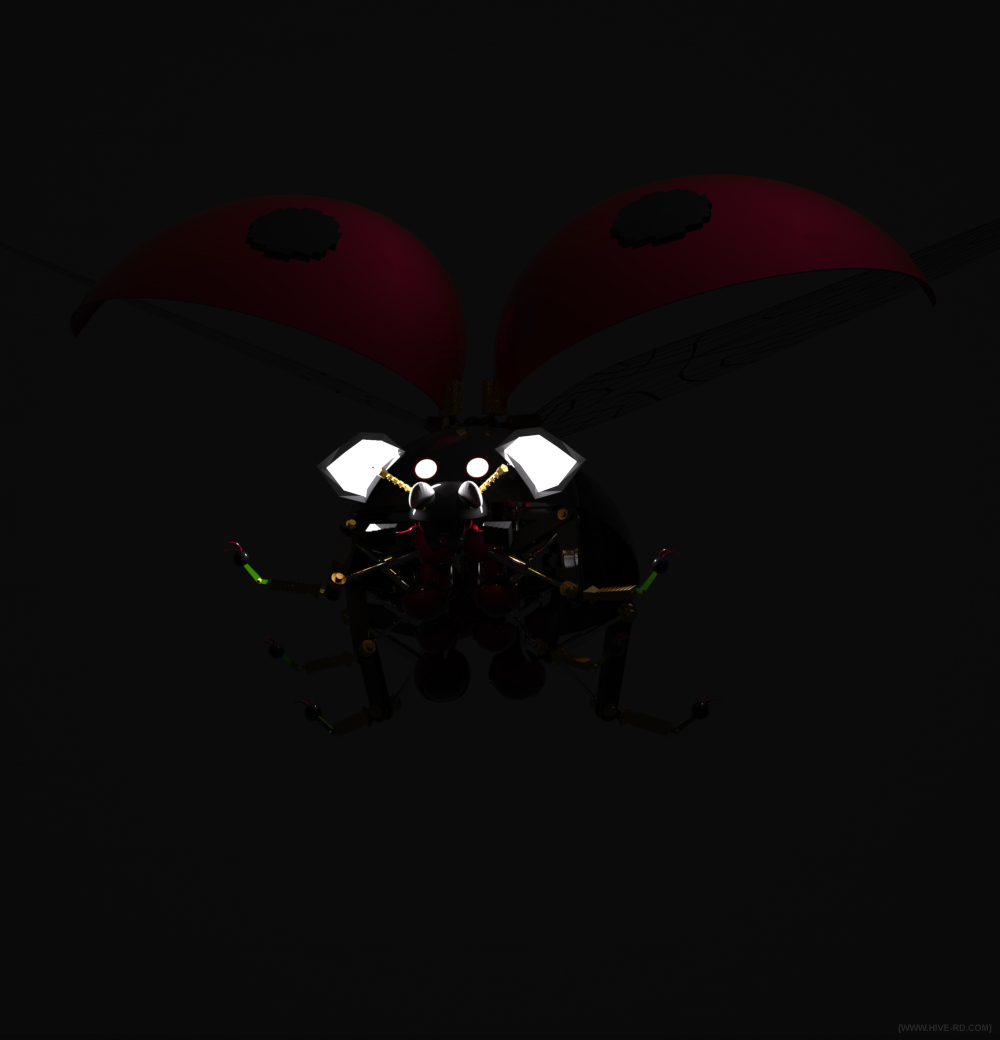
> Wasp (2 images)
This model could have gone in several directions, like bees and hoverflies, but the wasp was chosen as they are more menacing in the air.
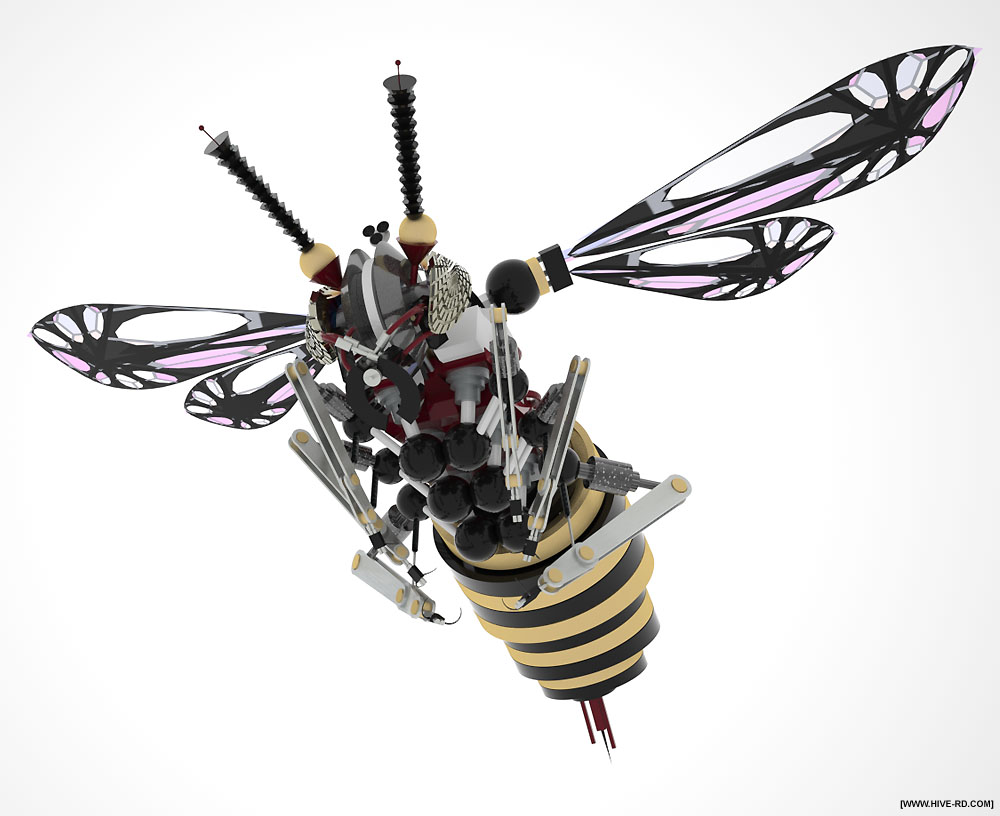
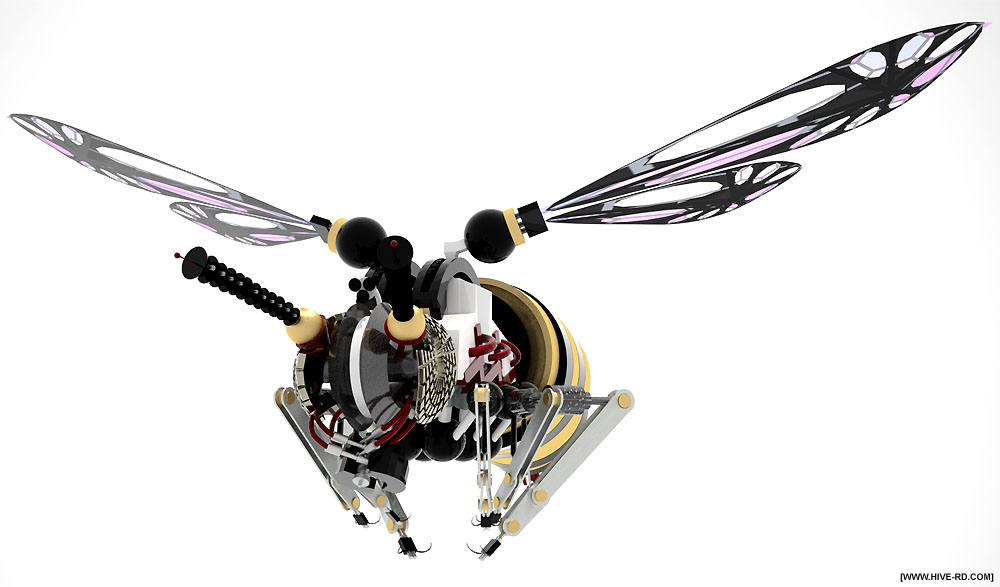
> Ant
Although the worker ant modelled here has large eyes, most real ants have poor eyesight, and rely more on scent and vibration.
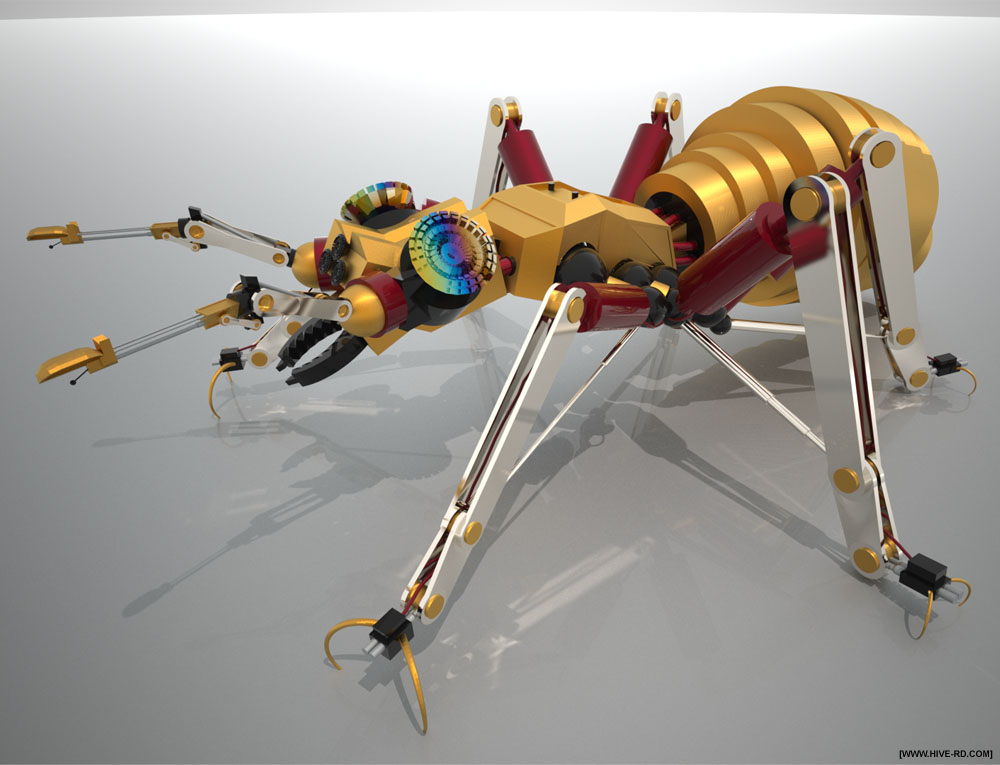
> Grasshopper (2 images)
In reality, a grasshopper would need to have a light-weight build. Yet here, inspiration was taken from the complex machinery of heavy digger and crane vehicles, in order to suggest both weight and power.
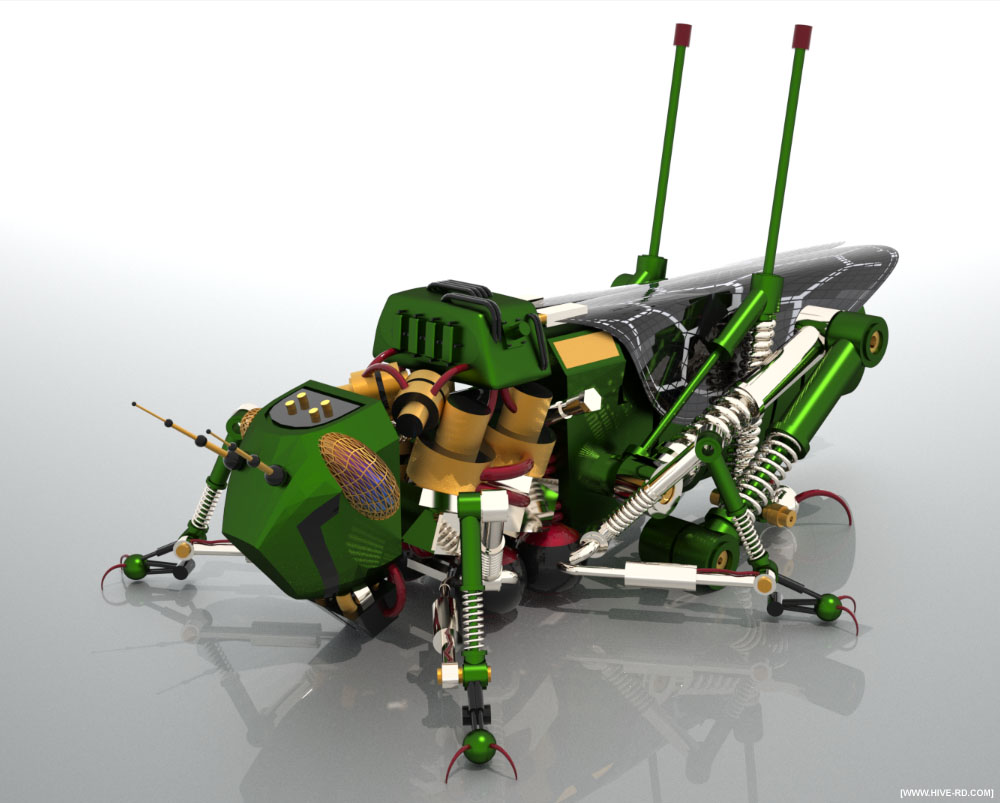
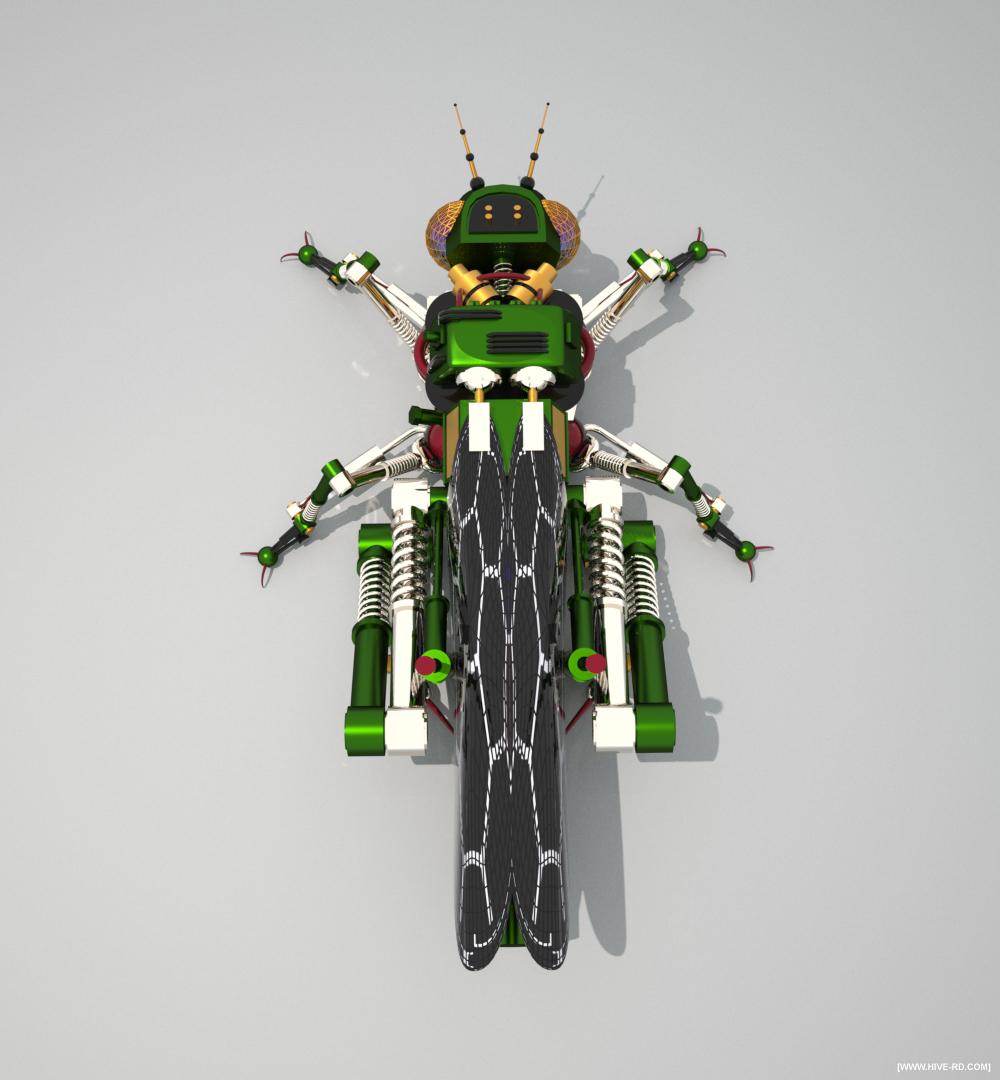
> Big Beetle
An ant has been provided to give a sense of scale. This is another creature that needed a feeling of weight and power (and danger, if picked up).
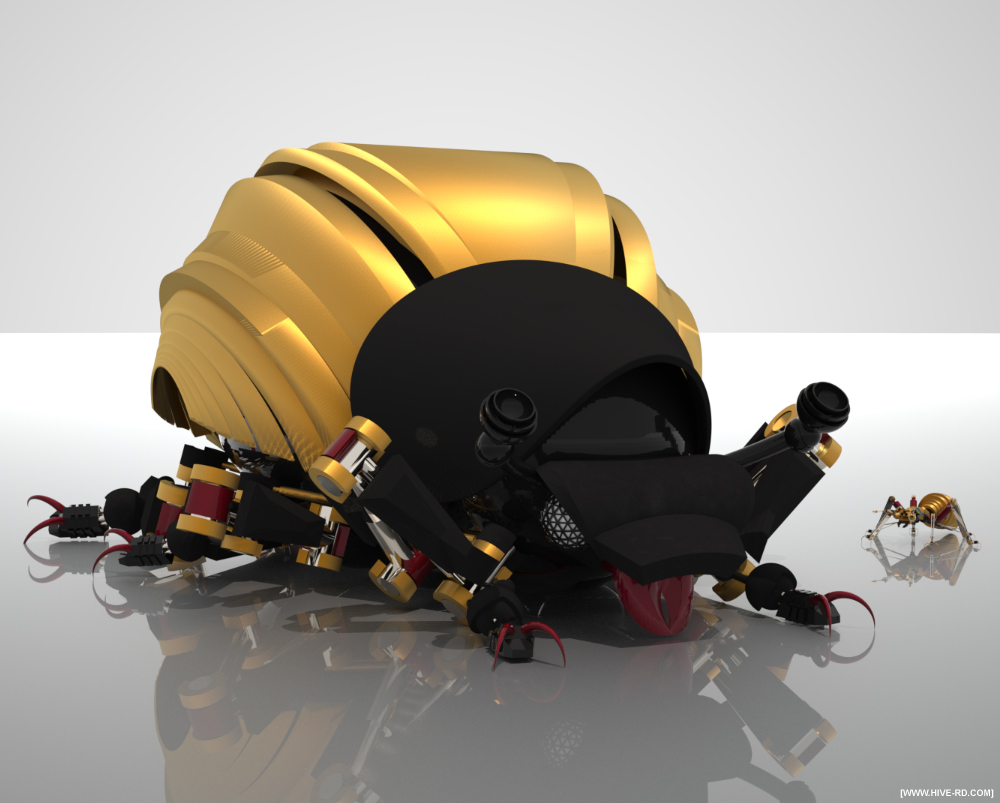
> Caterpillar
If you look carefully, you can see some of its inner workings through its translucent skin. The curved tail at the back suggests it is a hawkmoth caterpillar. It is often mistakenly thought they can use their back spike to sting, but the spike is in fact completely harmless. On the other hand, the smaller spikes that line the body are potentially venomous in many species (and that's quite apart from the furry caterpillars that can cause rashes).
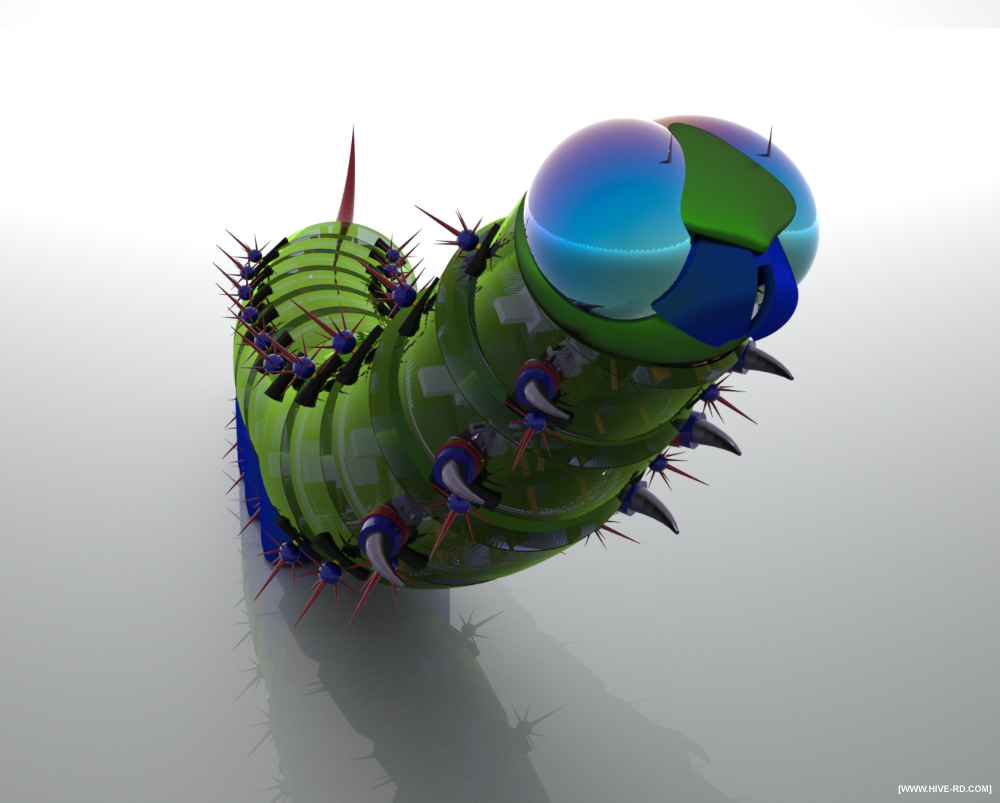
> Hawkmoth (2 images)
If moths were planes, then hawkmoths would be fighter jets -- generally capable of great speed, possessing stout builds for a good power-to-weight ratio, and some are capable of hovering. This image was inspired by the Hummingbird Hawkmoth (Macroglossum stellatarum) in particular, so a sleek, enclosed and aerodynamic design was used.
After the image was complete, I also noted it resembled a Swift (Apus apus), which is another accomplished aeronaut.
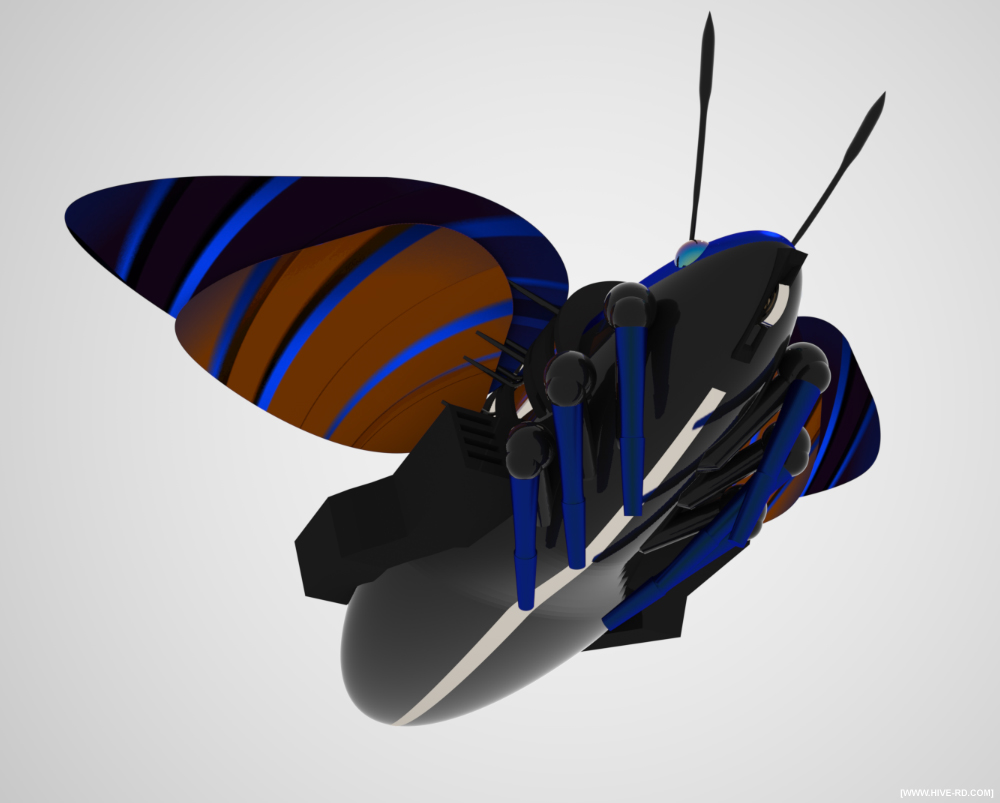
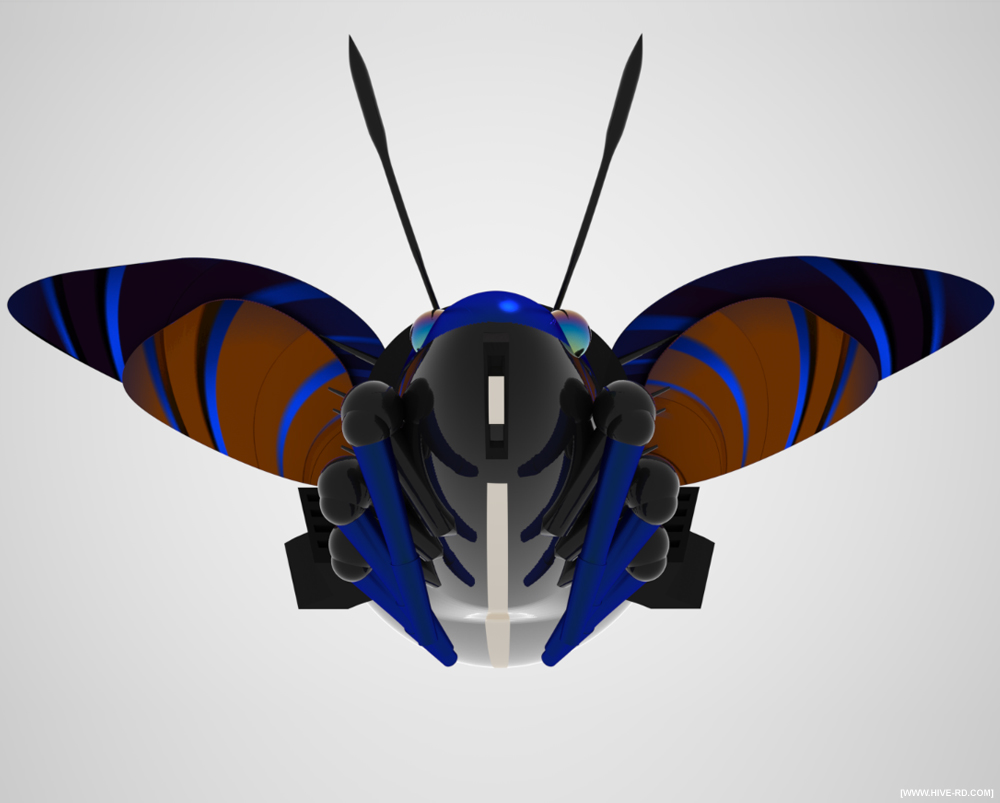
> Stick Insect (2 images)
Two different backgrounds provided for clarity. The pose you see here isn't a mistake, it's part of the natural 'stick' disguise.
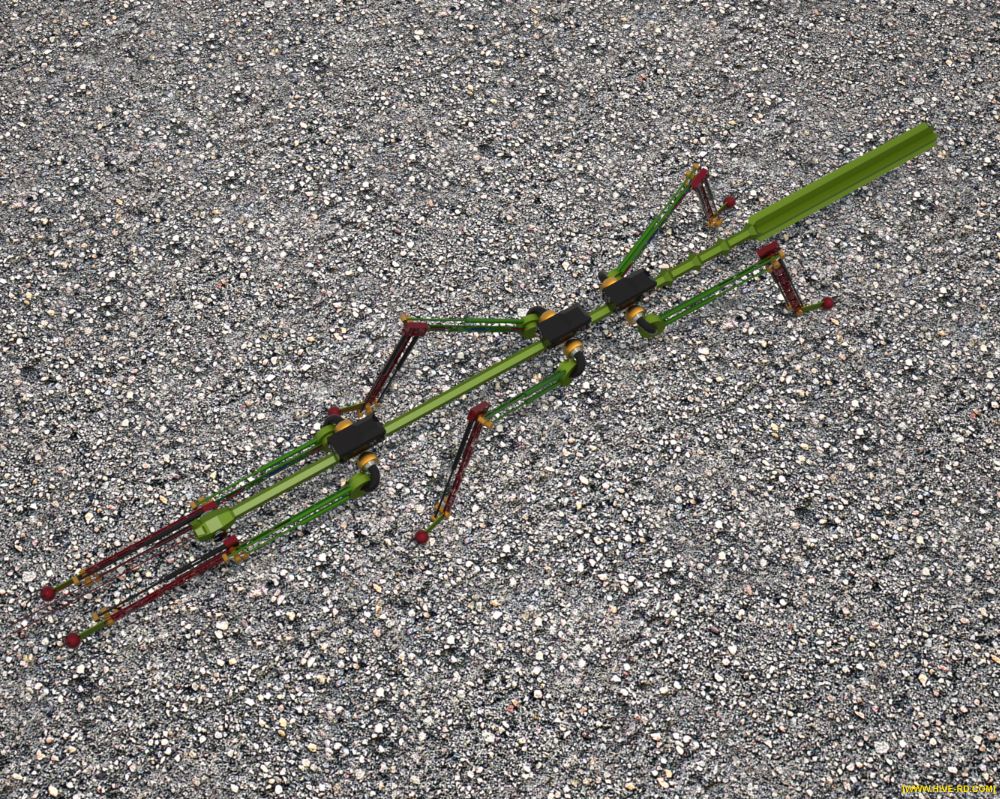
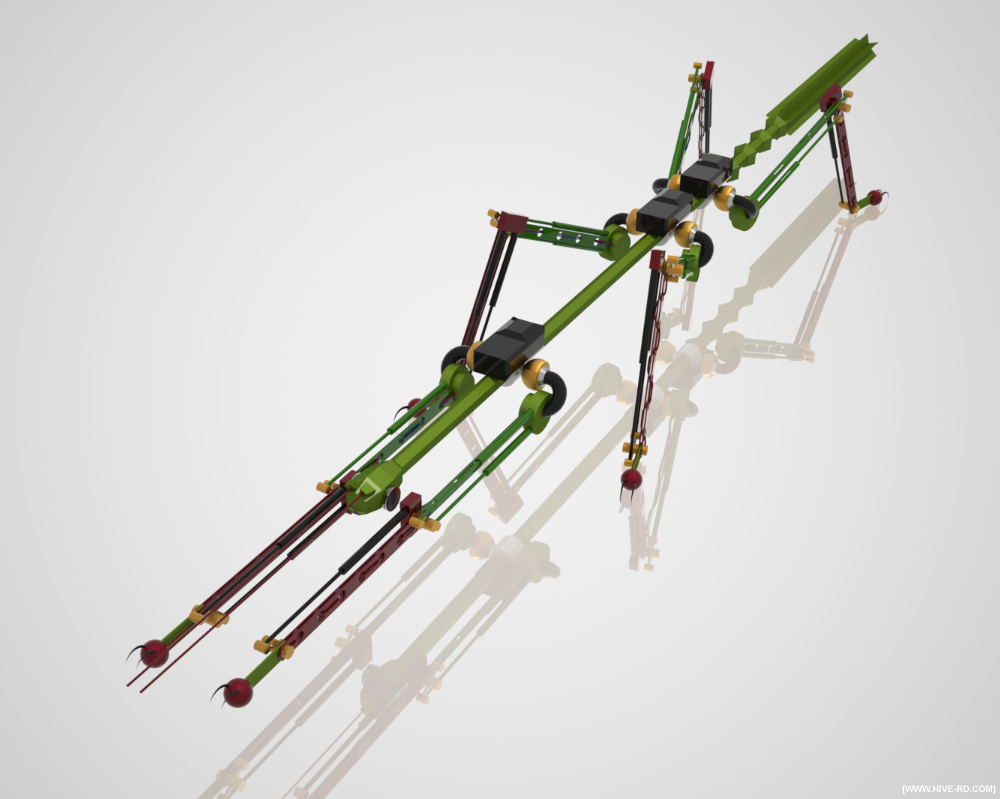
> Butterfly
It's resting on a glass flower, and the leaves are almost chrome. There were various ways to achieve an artificial butterfly in these contexts, but here I think the closer to nature, the better.
There are real butterflies and moths that have transparent wings, one such is the 'Glasswinged butterfly' (Greta oto).
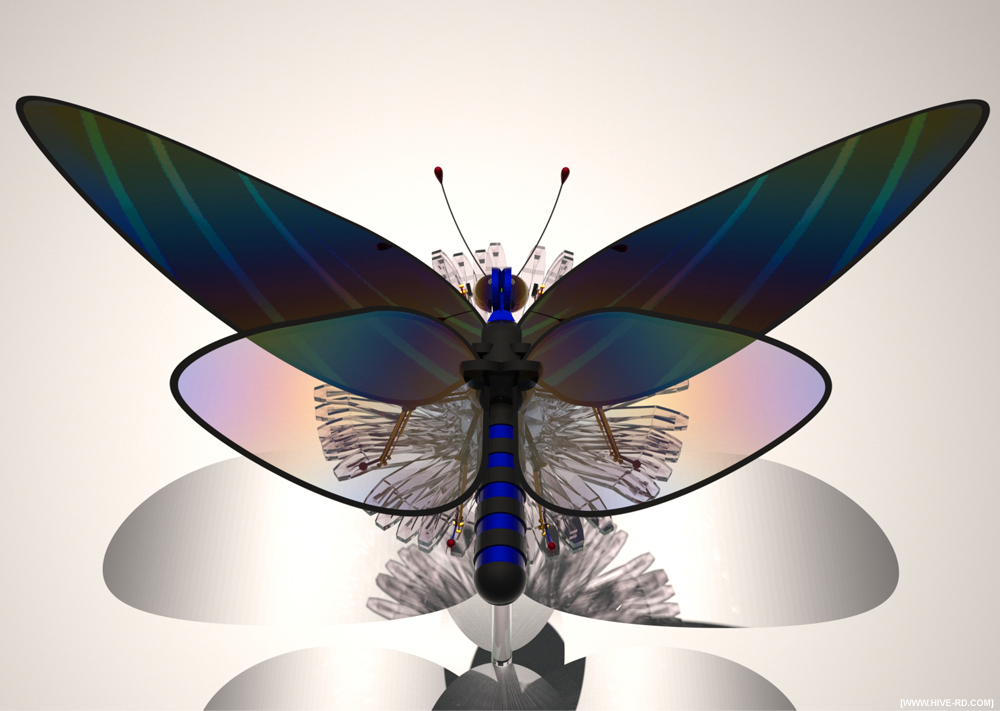
> In closing
Thanks for looking.





